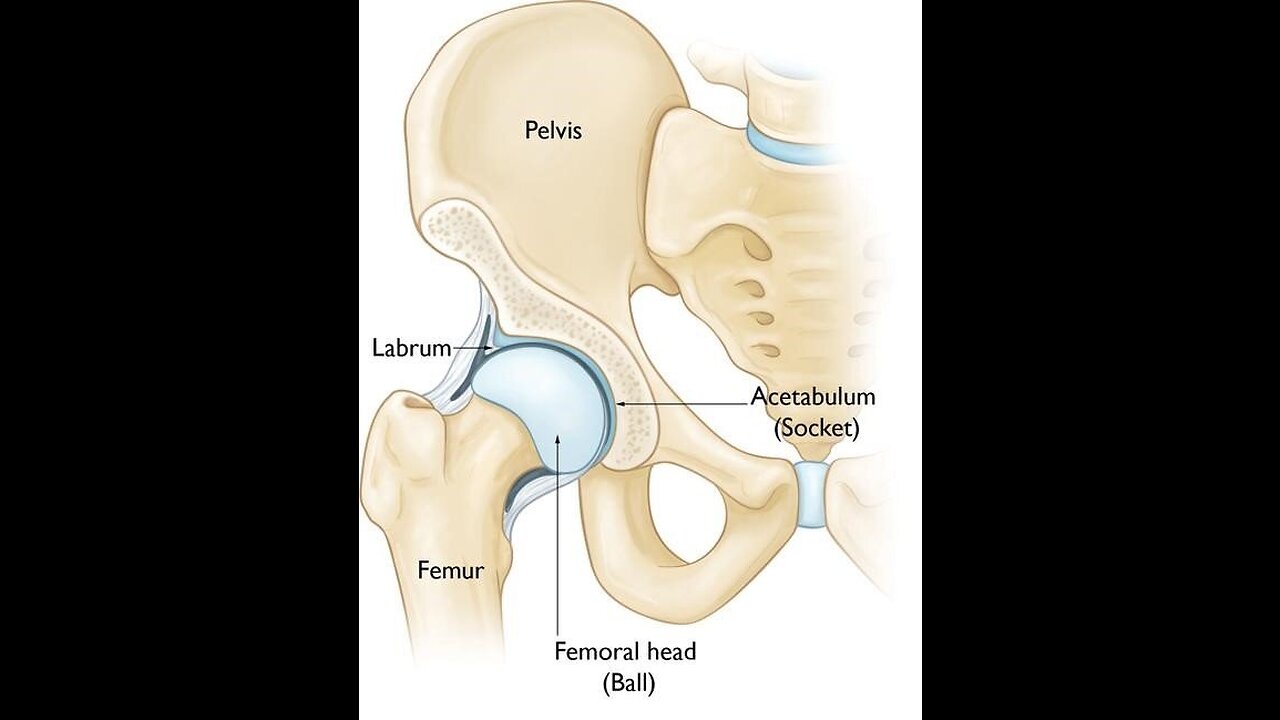Premium Only Content

"Unlocking Mobility: Exploring the Anatomy and Health of the Hip Joint"
The procedure for hip joint surgery, often referred to as a hip replacement surgery or hip arthroplasty, involves several key steps:
1. **Preoperative Assessment:** The patient undergoes a thorough medical evaluation, including physical examinations and imaging tests like X-rays or MRI, to determine the extent of damage to the hip joint and to assess the patient's overall health.
2. **Anesthesia:** The patient is given anesthesia to ensure they are pain-free and comfortable during the surgery. This can be general anesthesia or regional anesthesia.
3. **Incision:** A surgical incision is made on the side or back of the hip, allowing access to the hip joint.
4. **Joint Access:** The surgeon carefully moves muscles and other tissues to expose the hip joint while minimizing damage to surrounding structures.
5. **Hip Resurfacing or Replacement:** Depending on the extent of damage, the surgeon may perform a hip resurfacing (where damaged bone and cartilage are removed and replaced with metal components) or a total hip replacement (where the ball-and-socket components of the hip joint are replaced with artificial implants).
6. **Implant Placement:** The surgeon positions the artificial components precisely within the hip joint, ensuring stability and proper alignment.
7. **Closure:** Once the implants are in place, the surgeon closes the incision using sutures or staples.
8. **Recovery and Rehabilitation:** The patient is moved to a recovery area and closely monitored as they wake up from anesthesia. Post-operative care includes pain management, physical therapy, and gradual weight-bearing exercises to promote healing and regain mobility.
9. **Hospital Stay:** Depending on the patient's condition and the type of surgery, they might spend a few days in the hospital for recovery and rehabilitation.
10. **Follow-up Care:** After discharge, the patient will have scheduled follow-up appointments to monitor the healing progress, address any concerns, and adjust the rehabilitation plan as needed.
It's important to note that the specific details of the procedure can vary based on the patient's individual condition, the surgeon's approach, and the type of implants used. Additionally, advancements in surgical techniques, anesthesia, and rehabilitation practices have led to variations in the procedure over time. Always follow the instructions and guidance provided by your medical team for the best possible outcome.
-
 LIVE
LIVE
LFA TV
1 day agoLIVE & BREAKING NEWS! | MONDAY 12/01/25
859 watching -
 UPCOMING
UPCOMING
OFFICIAL Jovan Hutton Pulitzer Rumble
1 hour agoWhen Evil Masquerades As Patriots and Freedom! A Social Experiment
89 -
 57:11
57:11
Donald Trump Jr.
2 hours agoNarco-Terrorists: Dems' New "Resistance" Heroes, Plus Walz Welfare Scam | TRIGGERED Ep.296
76.4K77 -
 7:20:12
7:20:12
Dr Disrespect
8 hours ago🔴LIVE - DR DISRESPECT - REDSEC - BATTLEFIELD ISN'T READY FOR US
154K4 -
 1:02:16
1:02:16
BonginoReport
2 hours agoTrump Drops The "R Bomb" on Tim Walz - Nightly Scroll w/ Hayley Caronia (Ep.187)
23.2K37 -

SpartakusLIVE
1 hour agoI'M BACK from Florida || The RETURN to the Spartan Stronghold
3.18K -
 LIVE
LIVE
Nikko Ortiz
1 hour agoPistols In Tabor... | Rumble LIVE
161 watching -
 25:44
25:44
Clownfish TV
2 days agoLate Stage YouTube. | Clownfish TV
5.91K24 -
 LIVE
LIVE
Quite Frankly
4 hours agoThe French Question, 3rd World Problems, Strange Hospital Stories | Greg Carlwood 12/1/25
596 watching -
 LIVE
LIVE
The Mike Schwartz Show
2 hours agoTHE MIKE SCHWARTZ SHOW Evening Edition 12-01-2025
3,402 watching